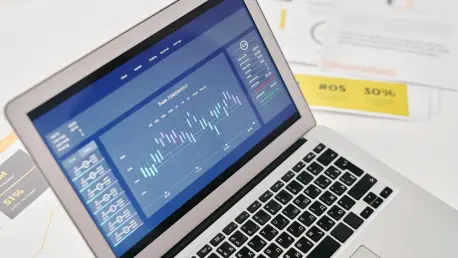In the rapidly evolving world of technology, Simon Glairy stands out as a recognized expert in insurance and Insurtech, especially in the realms of risk management and AI-driven risk assessment. With a wealth of experience and insights, he offers a unique perspective on developing technologies. Today, we delve into Simon’s expertise to explore how emerging technologies are reshaping the landscape of data analytics.
Can you give us your perspective on how a specialized processor like an APU differs from traditional GPUs in handling data analytic workloads?
Understanding the fundamental differences is crucial. GPUs were initially crafted for rendering graphics but were later adapted for tasks like AI and data analytics, which they perform well to an extent. However, an APU is designed from the ground up purely for data analytics workloads. This specificity allows for optimized performance where traditional GPUs might struggle, notably in processing large volumes of data rapidly and efficiently.
What inspired the attention towards a custom hardware solution like the APU in the analytics field, as opposed to relying on conventional processors?
The drive comes from looking at the inefficiencies inherent in using processors not tailored to the task. Standard processing units, while versatile, become cumbersome and resource-heavy for complex data workloads. The realization was that a dedicated processor could handle such tasks faster and with less energy consumption, inspiring the creation of hardware like the APU specifically focused on data analytics.
Could you elaborate on multi-threaded coarse-grained reconfigurable architecture (CGRA) technology and its impact on data processing?
Certainly. CGRA technology allows for a highly adaptable processing architecture. Unlike fixed-function hardware, it can be reconfigured dynamically to match the task at hand. This adaptability not only enhances performance significantly by being able to process more data simultaneously but also enables a high degree of energy efficiency, which is essential for modern data processing needs.
Considering your background in research and development, how has this influenced your insights into innovations like the APU?
Years of silicon research have shown that understanding the physical limitations and potential of silicon itself can lead to breakthroughs in performance when developing processors. This deep technical background allowed for envisioning and driving innovations that tailor hardware at a granular level, ensuring maximized performance and efficiency in data processing tasks.
Why do you think certain analytics platforms like Apache Spark were prioritized for the APU’s capabilities?
Apache Spark, being a leading platform for data analytics, presents a significant opportunity and challenge due to its complex workload demands. Targeting such platforms helps prove the APU’s capability to handle high volumes and complex computations, setting a precedent for its broader application across other data analytics and processing platforms.
Given the advancements in APU technology, how do you foresee its adoption among various industries?
As industries become more data-driven, the demand for efficient and high-performance data processing solutions like the APU will surge. I anticipate that it will become an indispensable tool across sectors, similar to how GPUs have for AI. The focus will be on industries that require heavy data analysis and decision-making tools, paving the way for widespread adoption.
Are there any compelling use cases where you have seen significant performance improvements with APUs?
Indeed, there are reports of drastic performance enhancements. For example, a pharmaceutical workload that traditionally required up to 90 hours could be completed in just 19 minutes using an APU. Such improvements demonstrate the transformative potential of this technology in fields requiring extensive data processing capabilities.
What is your forecast for the future development of processors specifically designed for data analytics?
Looking ahead, the evolution will likely focus on increased integration and specificity, with processors becoming even more tailored to particular types of data processing tasks. The goal will be to achieve unprecedented levels of efficiency and speed, minimizing energy consumption while maximizing output, fundamentally changing how industries operate with data.









